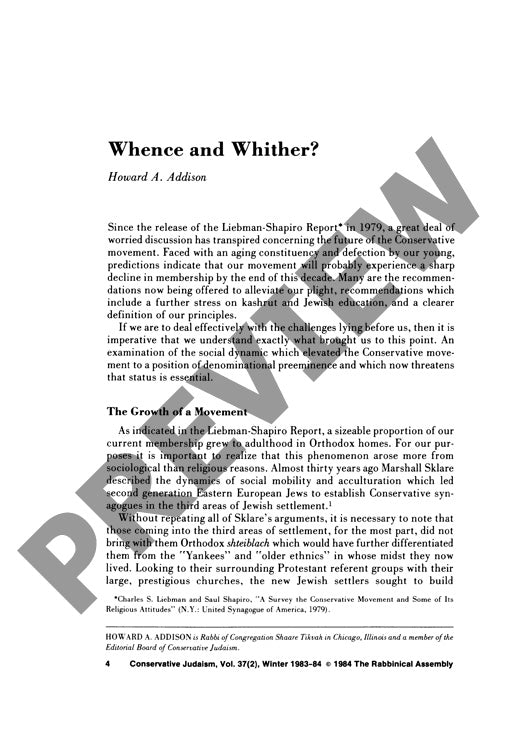Whence and Wither
Couldn't load pickup availability
As Conservative Judaism faces declining membership after decades of dominance in American Jewish life, a complex interplay of social and religious forces challenges its future vitality. Historical analysis of membership patterns and demographic shifts, drawing on the 1979 Liebman-Shapiro Report and Marshall Sklare's research on Jewish acculturation, reveals three distinct constituencies shaping the movement's trajectory: suburban "veterans" from the post-war era, institution-trained young adults seeking authentic religious experiences, and unaffiliated Jews pursuing adult Jewish connections. The movement's historical ascendance stemmed primarily from sociological rather than religious factors, as second-generation Eastern European Jews sought synagogues that balanced acculturation with tradition. As class differences between Jewish denominations diminish, Orthodox defection will likely decrease, suggesting that ideological refinement alone cannot address current membership challenges. Institutional revitalization requires pluralistic programming that serves diverse constituency needs through varied worship formats, comprehensive educational offerings, and innovative ritual development. By authentically applying its principles of Tradition and Change to contemporary Jewish life, the Conservative movement can maintain relevance for mainstream American Jewry despite losing its historical demographic advantages.

More Information
-
Physical Description
-
Publication Information
Published 1983-1984
ISBN
-
Publication Credits
Howard Addison

